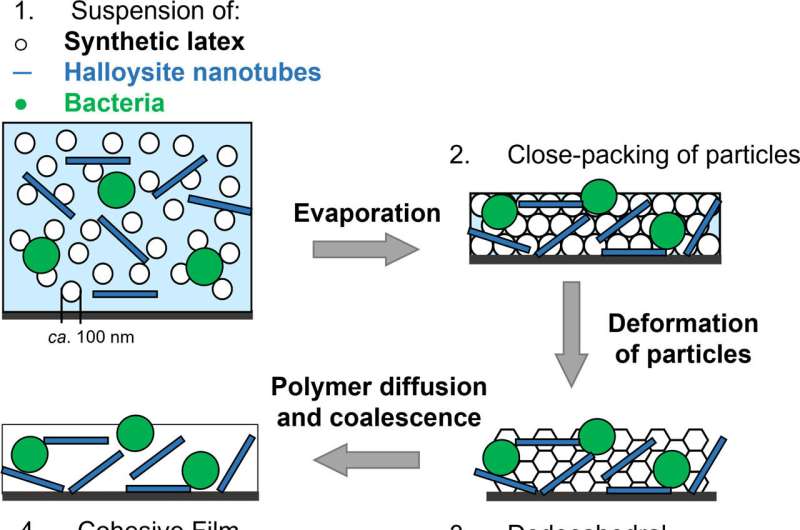This article has been reviewed according to Science X's editorial process and policies. Editors have highlighted the following attributes while ensuring the content's credibility:
fact-checked
trusted source
proofread
Bacteria found in desert pave the way for paint that produces oxygen while capturing carbon

An innovative paint that contains oxygen-producing bacteria capable of capturing carbon dioxide (CO2) has been created by scientists from the University of Surrey. Researchers suggest this paint, known as a "biocoating," could be used in extreme environments, such as space stations. This study was published in the journal Microbiology Spectrum.
Biocoatings are a type of water-based paint that encase live bacteria within layers. Besides capturing carbon, they can also serve as bioreactors or as biosensors.
Surrey's creation, named "Green Living Paint," features Chroococcidiopsis cubana, a bacterium that undergoes photosynthesis to produce oxygen while capturing CO2. This species is usually found in the desert and requires little water for survival. Classified as an extremophile, it can survive these extreme conditions.
Dr. Suzie Hingley-Wilson, a senior lecturer in bacteriology at the University of Surrey said, "With the increase in greenhouse gases, particularly CO2, in the atmosphere and concerns about water shortages due to rising global temperatures, we need innovative, environmentally friendly, and sustainable materials. Mechanically robust, ready-to-use biocoatings, or 'living paints,' could help meet these challenges by reducing water consumption in typically water-intensive bioreactor-based processes."
To investigate the suitability of Chroococcidiopsis cubana as a biocoating, researchers immobilized the bacteria in a mechanically robust biocoating made from polymer particles and natural clay nanotubes in water, which was fully dried before rehydrating. They observed that the bacteria within the biocoating produced up to 0.4 g of oxygen per gram of biomass per day and captured CO2. Continuous measurements of oxygen showed no signs of decreasing activity over a month.
In contrast, researchers conducted similar experiments with the bacterium Synechocystis sp., another cyanobacterium usually found in freshwater. Unlike its desert counterpart, it was unable to produce oxygen within the biocoating.
Simone Krings, the lead author and a former Postgraduate Researcher in the Department of Microbial Sciences at the University of Surrey, said, "The photosynthetic Chroococcidiopsis have an extraordinary ability to survive in extreme environments, like droughts and after high levels of UV radiation exposure. This makes them potential candidates for Mars colonization."
More information: Simone Krings et al, Oxygen evolution from extremophilic cyanobacteria confined in hard biocoatings, Microbiology Spectrum (2023). DOI: 10.1128/spectrum.01870-23
Provided by University of Surrey





















